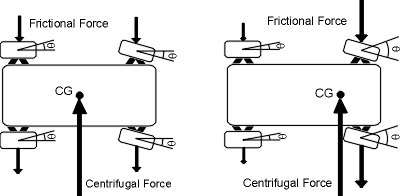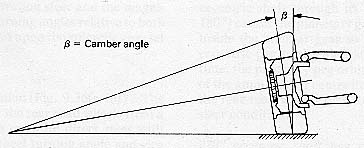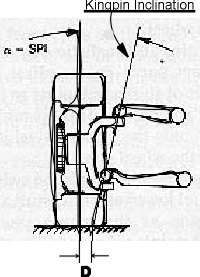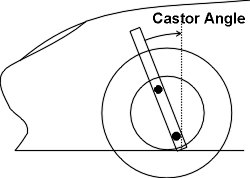
When a car is cornering, its CG is subjected to centrifugal force. The tyres generate slip angle thus frictional force to counter the centrifugal force, so the car keeps cornering without slide. (See figure in below)

On the contrary, rear-heavy car has larger slip angle at the rear, thus introduce oversteer. Similarly, we can find a 50/50 balanced car having neutral steer. This is our choice for optimum handling. We don't really need oversteer in this case, because such oversteer is not controllable, unlike power oversteer which we have found in RWD cars.
The result favours front-engined, RWD cars (FR), which is easiest to achieve 50/50 F/R weight distribution.
Mid-engined, RWD cars (MR), with its slight rearward weight bias at about 40/60, is slightly inferior in here. But remember, its superior steering response, steering feel and dynamic balance are probably more than enough to compensate.
Front-engined, FWD cars (FF) is the worst in here, and far worst. As all the heavy mechanical parts - engine, transmission, differential - hang over the front end, the front axle normally takes up to two-third of the weight. This tends to create heavy understeer. In addition to the understeer generated by the FWD configuration, the result is even worse. This require a lot of work to do in the suspension geometry and steering mechanism for compensation. And there must be some trade-off. Take an Alfa GTV as an example. It has to install an ultra-quick 2.2 turns steering to counter understeer, thus requires quite a lot steering effort. If power steering were increased, steering feel must be deteriorated. The multi-link rear suspension was also probably chosen for compensating the understeer because the geometry is more tunable than the original MacPherson strut.
There is another problem troubling the Alfa - the 3.0 V6 version, which is intended to be the range-topper, found its even heavier front end leads to inferior handling than the cheaper and slower 2.0 version. This is a headache to the marketing personnel.
However, once again I
have
to point out that everything must have exception, especially when all
mass
production cars are also limited by other factors such as packaging,
requirements
for refinement and cost etc. When both under these limitations, a
well-sorted
Alfa 156 could outhandle an ill-fated BMW 3-series. Although recently
RWD
luxurious / sports sedan / compact elegant sedan seems to be reviving,
FF is still the main trend for the majority budget cars due to its
lower
cost and space-saving advantage.
 When
a wheel has positive cambered, due to the elasticity of tyres, the
wheel
will be reshaped to something like the base of a cone. It will have a
tendency
to rotate about the peak of the cone, as shown in the picture. Now, you
will see the wheel tries to steer away from the center of the car.
When
a wheel has positive cambered, due to the elasticity of tyres, the
wheel
will be reshaped to something like the base of a cone. It will have a
tendency
to rotate about the peak of the cone, as shown in the picture. Now, you
will see the wheel tries to steer away from the center of the car.
If both the right and left wheels are positive cambered (that means they leans to opposite direction), the steering tendency will be cancelled so that the car remains running in straight line. If the car is turning into a corner, weight transfer put more load on the outside wheels than the inside wheels, that means the outside wheel's steering tendency will have more influence to the car. As the positive-cambered outside wheel tries to steer the car to the outside of the corner, the car will be understeered.
On the contrary, if
both
wheels are negative cambered, the car will oversteer.
We may deliberately need positive / negative camber, but we don't want the camber to be changed when the wheel meets bump or when the car body rolls into a corner, otherwise the handling will be very unpredictable or even uncontrollable. Therefore we prefer a suspension geometry whose camber varies little under all conditions. As said many times in before, double wishbones, especially is non-equal length, non-parallel double wishbones, is generally regarded to do the job best. Therefore from sports car to Formula One, all the high performance cars use it. For other kinds of suspensions, you can read the previous chapter about Suspension.


The more the steering offset D, the more self-returning effort generated. Similarly, the larger the castor angle, the more self returning action.
If the car is FWD, the steering offset D will introduce torque steer. This is because the tractive force will try to pull the center of contact patch of the front wheels forward, thus the wheel will rotate about the point the kingpin axle projected to the ground. The torque steer moment is the product of D and the tractive force. Therefore the amount of torque steer is proportional to D. The solution is to build more inclination to the kingpin so to reduce D. This is easy to be implemented in double wishbones suspension which is shown in the picture, but not MacPherson strut, whose kingpin also serves as spring and shock absorber. If we incline the kingpin too much, there will be too much lateral force transmit via the spring / shock absorber to the car body, thus causing shake and instability.
Therefore we say MacPherson strut is not very suitable for FWD cars having a powerful engine. Alfa Romeo 164 is one of the examples, whose torque steer ruined the otherwise brilliant handling. No wonder its successor, 166, has switched to double wishbones front suspensions.
Consider a car with a very weak chassis which is easy to flex and twist under force. If it employ stiff springs and dampers to the suspension, the shock cause by road irregularity will be transferred to the chassis directly. The weak chassis will be twisted and bent, thus the suspension geometry will be reshaped, creating non-neutral steer and other side effects that is not the original suspension design intended to cope with. Therefore a weak chassis must ride on softer spring and dampers.
For the benefit of handling, we always want stiff spring and damper as long as ride comfort is acceptable. So we need a rigid chassis which could cope with the stiff suspensions without flex or twist.